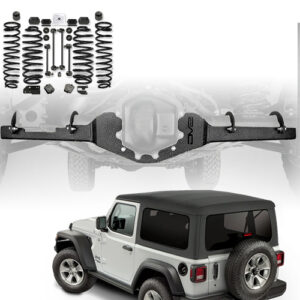If you’ve ever thought about giving your vehicle a louder or more distinct sound, you’re not alone. Horns aren’t just for saying “hello” or alerting others—they play a crucial role in safety and communication on the road. For anyone new to the world of horn upgrades, understanding how to pick the right horn and ensure it fits your vehicle is essential. This guide will walk you through everything you need to know, from basic horn types to compatibility tips.
Why Consider Horn Upgrades?
First off, why bother upgrading your horn at all? Stock horns are often quiet, generic, or simply not loud enough for certain driving environments. Whether you drive a car, truck, motorcycle, or even an off-road vehicle, having a horn that stands out can:
-
Increase your road safety by grabbing attention quickly.
-
Give your vehicle a unique, personalized sound.
-
Replace a faulty or worn-out horn that no longer works well.
If any of these sound like your reason, then upgrading your horn is a smart move.
Types of Horns You Can Upgrade To
When thinking about horn upgrades, it’s helpful to know what options are out there. Here are the most common types:
1. Single-Tone Horns
These are the basic horns you’ll find on many older or economy vehicles. They produce one constant tone when activated. While simple, they tend to be less effective at cutting through ambient noise.
2. Dual-Tone Horns
More popular than single-tone, dual-tone horns combine two sounds at once, creating a richer, louder tone. They’re common on many modern vehicles and tend to be more attention-grabbing.
3. Air Horns
For those who want the loudest, most attention-demanding sound, air horns are the go-to. Often used on trucks or emergency vehicles, these require an air compressor to work, but deliver a powerful blast.
4. Electronic Horns
These are digital or speaker-based horn upgrades that can mimic various sounds, including musical tunes or custom alerts. They’re less common but growing in popularity for customization enthusiasts.
Understanding Horn Compatibility
Before buying a horn, compatibility is key. Not all horns will fit or work with every vehicle. Here’s what you need to check:
Voltage Requirements
Most vehicle horns run on 12 volts, but some trucks or specialty vehicles may use 24 volts. Using a horn with the wrong voltage can cause it not to work or even damage the electrical system.
Mounting and Size
Horns come in different shapes and sizes. Check where your current horn is mounted and if the new one can fit in the same spot or if you’ll need a new bracket. Some air horns are bulkier and require extra space.
Wiring and Connectors
Different horns use different connectors or wiring setups. Some are simple plug-and-play, while others might require splicing or additional relays to function properly.
Legal Restrictions
In some regions, there are laws about how loud or what type of horn you can use. Always check local regulations to avoid fines or vehicle inspection issues.
How to Choose the Right Horn for Your Vehicle
Picking the perfect horn depends on your needs and your vehicle type. Here are some questions to guide your decision:
-
How loud do you need your horn to be? If you drive in noisy city traffic, a louder horn can help. For quieter areas, a standard dual-tone might suffice.
-
What sound do you prefer? Some like a sharp, piercing tone, others prefer a deep, mellow blast.
-
Do you want a simple upgrade or a full custom setup? If you’re not experienced with electrical systems, a plug-and-play horn is easier.
-
What’s your budget? Air horns and electronic horns can be pricier than basic single or dual-tone options.
Installing Your New Horn
Once you’ve selected the right horn, installation is the next step. If you’re a beginner, here’s a simple overview:
Step 1: Disconnect the Battery
Safety first! Always disconnect your vehicle’s battery to avoid electrical shocks or short circuits.
Step 2: Remove the Old Horn
Locate your existing horn (usually behind the front grille or near the radiator). Disconnect the wiring and remove the mounting bolts.
Step 3: Test the New Horn
Before permanently installing, connect the new horn temporarily to make sure it works with your vehicle’s wiring.
Step 4: Mount the New Horn
Use the existing bracket or install a new one if needed. Make sure the horn is securely attached and aimed correctly so the sound projects outward.
Step 5: Connect Wiring Properly
Attach the wiring connectors or use the wiring instructions provided. If your horn requires a relay or additional fuse, install those as well.
Step 6: Reconnect the Battery and Test Again
Turn on the vehicle and press the horn button to ensure everything works smoothly.
If at any point this feels complicated, don’t hesitate to get help from a professional mechanic or auto electrician.
Common Mistakes to Avoid with Horn Upgrades
It’s easy to get excited about horn upgrades but make mistakes that can cause frustration:
-
Ignoring voltage specs: Using a 24V horn on a 12V system won’t work.
-
Poor mounting: A loosely mounted horn can rattle or get damaged.
-
Skipping a relay: Some horns draw more current and need a relay to protect your wiring.
-
Forgetting legal limits: A horn that’s too loud or not street-legal can cause trouble.
Avoiding these will save you time, money, and headaches.
Benefits of Upgrading Your Horn
After all this talk, what are the real perks of making the switch?
-
Better safety: A louder or clearer horn gets the attention of other drivers and pedestrians faster.
-
Improved reliability: New horns often work better and last longer than old, worn-out ones.
-
Personalized sound: Your vehicle stands out with a horn sound that suits your style.
-
Peace of mind: Knowing your horn works when you need it most can be reassuring.
Final Thoughts on Horn Upgrades and Compatibility
Upgrading your horn is a small but impactful way to enhance your vehicle. Whether you want a louder sound for safety or a unique tone for style, the right horn can make a big difference. Just remember to check compatibility carefully — voltage, mounting, wiring, and legal rules are all important. Taking the time to pick and install the right horn will ensure your upgrade is smooth and effective.





